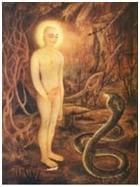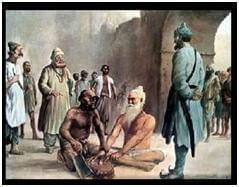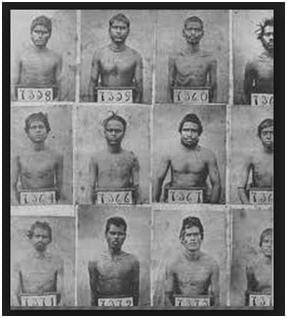Culture
More Than A Festival. . . Deepavali
Aravindan Neelakandan
Oct 26, 2019, 08:53 PM | Updated 08:53 PM IST
Save & read from anywhere!
Bookmark stories for easy access on any device or the Swarajya app.


It is an occasion to reflect, to celebrate nature, and to be grateful for the sacrifices made by a few great men and women of the past
Deepavali is the pan-Indian festival of light. It is the celebration of freedom at its highest. All Indic traditions (Vedic, Jain and Sikh) have contributed in their own way to the celebration of this festival. Mythologies that function at various levels, along with a history forged by sacrifices of finest men and women of India, have made the festival cherished in the memories and lives of the billion-strong Indian communities. It is the Festival of Light, and this light symbolizes the triumph of that divine, will to freedom that is inherent in humanity against all forces of stagnation and oppression.
Every thing that divides humanity is a hurdle towards the freedom. Hindu nationalists, after all, were proclaiming the unity of the human race from Himalayan peaks while Europe was besieged with racial theories and conflicts. As early as 1910 Sri Aurobindo pointed out that race is a pseudo-scientific category. Veer Savarkar declared in the 1920s that humanity is one from pole to pole and all other divisions are man-made and artificial. And as late as 1940s, Europe was bewitched with racial pseudo-sciences.
Why talk about race during Deepavali?
Triumph over Racism

During the expansion of European colonialism, colonial “scholars” — who were often missionaries or administrators — tried to present the history of the people of continents like Asia, Africa and the Americas. They derived the lineage of these people from Ham, a son of the Biblical figure Noah. Why Ham? Because Noah cursed him and his descendents with servitude to the descendants of Noah’s other two sons. This mythology of Genesis was transformed into the history of the people whose continents the Europeans colonized. The curse of Noah justified slavery. Even after the abolition of slavery, it made Europeans feel good about the civilizing mission they were to take up among the dark-skinned races of the world.
In India a variant of this Hamitic myth set the dark-skinned Dravidians beneath the fair- skinned Aryan invaders (who were descendants of Shem or Japheth as per the guesses of the researcher concerned). Soon the demons of Hindu mythologies became dark-skinned Dravidians and the Gods fair-skinned Aryans with blond hairs for special effects. Social stagnation in a colonially impoverished society provided a fertile ground for breeding political movements which applied racial categories to social inequalities sprouted.
For the colonial administrators these movements were blessings in disguise, and they encouraged these social divides to counter the rising tide of the anti-colonial freedom movement in India. In the process the beautiful cultural traditions of India became victims of racial interpretations. Deepavali is one such. In South India the Dravidian supremacist movement was run by E. V. Ramasami, a disgruntled semi-literate Congressman. He declared that Narakasura — a demon whose death is celebrated as Deepavali in South India– was Dravidian and that he was killed by deceit by Aryan invaders. So he declared that Deepavali should be a day of mourning for Tamils.
It is interesting to note that even though Dravidian ideology — which is racism camouflaged as social justice — is the ideology of the DMK in Tamil Nadu, people have rejected this racial interpretation of the Deepavali mythology. Tamil Nadu is full of children bursting crackers and people exchanging sweets on the day of Deepavali — virtually indistinguishable from the rest of India. Deepavali thus symbolizes in Tamil Nadu the victory of Tamil culture, which is an integral yet an important part of Indian culture, against racist propaganda. To feel the significance of this cultural victory over racist narrative look at Rwanda, where a parallel racist divide of the people by Hamitic myth-turned-history resulted in genocide and massacres and wars among people of the same stock and culture who were made to believe that they were alien races.
Eco-Myths of Deepavali
Killing of Narakasura
For South Indians the prevalent mythology of Deepavali is the killing of Narakasura, a demon born when Vishnu rescued Earth from chaos. Narakasura, though born of divine parents, had an uncontrollable urge to conquer the entire universe. He imprisoned women. In the end he was met in battle by Vishnu, who was aided by an incarnation of Mother Earth. Ultimately he was killed not by Vishnu but by Mother Earth, whose son he happens to be. The moment of death was also the moment of repentance and realization. Realizing his wrongs the dying demon requested that his death be celebrated as the Festival of Light.
Are not we too the children of Earth carrying the divinity within and yet act with an uncontrollable urge to control all nature? And have not our technologies, born out of an urge to control nature, created a serious imbalance between yin and yang and relegated the feminine into dungeons of our unconscious? Then will not Gaia — Mother Earth — remove our species if we do not make our presiding paradigms sustainable?
Lakshmi Emerges from the Churning

Hindu mythology offers an inner map to a deeper reality that can reconnect with solutions for the crisis the individual and the collective humanity faces. Lakshmi symbolizes the wealth that is holistic: it is wealth that puts welfare (Shub) before profit (Laabh).
Deepavali is the day she emerged from the celestial ocean churned by both the divine and demonic beings. In a way that is the story of every invention, every progress that humanity made from the day our distant evolutionary cousin Homo erectus discovered fire.
Every progress made out of the churning also contains in it the hidden cost, the evolutionary cost which if not taken into account properly can lead to a holocaust – natural or ecological. Humanity needs an inner strength coupled with wisdom to overcome that hidden cost – like Shiva drinking the poison that came out of the churning. Then alone the wealth holistic and dynamic which Lakshmi symbolizes emerges.
Lifting the Govardhan Hill by Sri Krishna
This was also the day when Sri Krishna a rebellious cowherd raised his voice against the unseen celestial Gods and urged his people to venerate nature instead. Sri Krishna made them understand that humanity is part of the web of life which also includes mountains and streams. He showed that ultimately it shall be our relation to down to earth nature rather than sky god-father figures that shall protect humanity during ecological crisis.
The mythology of Deepavali has layers and layers of meaning and we humans as a species would do well to ponder over it.
Historic Associations with Deepavali


Lord Mahavira the last of the Jain Tirthankaras, attained Nirvana or Liberation on this day at Pavapuri on October 15 527 CE – it was on a Deepavali dawn. Mahavira taught absolute non-violence not only against one’s enemies or believers in one’s own religion but even towards poisonous animals and in fact towards all existence. In the Sikh Dharma, the third Sikh Guru, Guru Amar Dhas made Deepavali Sikhs should gather together and get the blessings of the Guru. It was also the day the foundation stone of Har-Mandir Sahib was laid. It was also the day Guru Hargovind humbled the Moghul tyrant who had jailed him. He made the Mughal not only release the Guru from the jail, but also through the grace of Guru another 52 Hindu chieftains whom the tyrant had imprisoned.
The Sacrifices We Should Remember
Bhai Mani Singh (circa 1662-1737 CE)

Then as we celebrate Deepavali we cannot forget the kind of sacrifices associated with it. One such is that of Bhai Mani Singh of the Khalsa Panth who in 1737 CE sacrificed his life for the right to celebrate Deepavali in the Golden Temple (Harmandir) of Punjab. He was cut limb by limb and tortured for his “offense” in organizing the Festival of Light. With the choice either to embrace Islam or death under torture, Bhai Mani Singh, with his being fixed in EkOnkar allowed the executioner to cut every inch of his body. Sikh tradition remembers how the martyr compassionately reminded the executioner to carry out the torture, when at one stage the executioner himself staggered at his own brutality. ‘I do not want you to get punished because you did not torture me properly’, the martyr said his hesitant torturer in a supreme display of compassion. To this day Sikhs remember this super-human sacrifice as they light the lamps in Gurudwaras.
Light again Shines in the Colonial Darkness

Less well known is the sacrifice indentured laborers of Indian origin underwent in Africa for their right to celebrate Deepavali. Two historians, Ashwin Desai and Goolam Vahed, in their book titled “Inside Indenture” revealed how indentured Indian laborers who went to Africa in the 1860s to work in the sugarcane fields relentlessly fought for their right to celebrate Deepavali — which the colonial authorities refused. At last they won their right to celebrate the festival in 1907. Says Desai:
Being the 100th year of celebrations, we need to recognize and pay homage to those indentured laborers and many other Hindus who sacrificed a great deal to convince the white colonial authorities that Hinduism was a religion and that they had a right to celebrate Deepavali.
Thus in South Africa Deepavali became a symbolic clarion call for freedom and end to discrimination that anticipated the arrival of Mahatma Gandhi and Nelson Mandela. Nelson Mandela himself noted how Deepavali helped him when languished for years in the jails of Robben Island.
I recall Mr. Govender from Cape Town and Mr. Padyachee from Pretoria. They would come and offer prayers with us and bring with them parcels of sweetmeats. The authorities were insistent that these parcels were only for believers in the Hindu faith. Through our struggles were able to challenge the authorities on this narrow conception and we insisted that all the embracing philosophies that Hinduism is based on extended a hand to all of humanity.
A Hindu savant could not have expressed the symbolism of Deepavali better than the heart-stirring words of Nelson Mandela:
-prosperity over poverty-knowledge of ignorance
-good health and well being over disease and ill health
-Freedom over bondage
At this time of Diwali and as I light this sacred lamp I am aware of how this lamp symbolizes the triumph of
-Enlightenment over blind faith
Nelson Mandela remembered at this point Swami Dayananda the great Vedic humanist and founder of Arya Samaj. It was not a mere mention as it was Bhai Paramanand of Arya Samaj who stirred the spirit of freedom amidst the indentured laborers in South Africa which later evolved in to the fight against apartheid.
Nelson Mandela stated:
I am told by learned Hindu scholars that as we light the lamp and also pray to the Goddess Laxmi, we need to remember that from our position of well being and prosperity that there are many who are less fortunate and deprived and that we will have to work together to formulate ways of helping to respond to the grinding poverty and desperation in the country.
At this time we also remember leaders and persons who gave their lives for the cause of freedom. Now a we remember Swami Dayanand who was poisoned for his convictions for a free and independent India and who died on Diwali day we remember the many brave persons in our struggle who gave their lives for the cause of freedom We remember Krish Rabillal, Ahmed Timol, Solomon Mahlangu and thousands of others. Those lamps went out and in their place thousands more lamps were lit for there to be freedom and peace in our land.
In conclusion he reinterpreted the Hindu epic Ramayana in the context of the fight for freedom:
In our struggle in this country there are many lessons that can be drawn from the festival and the Epic The Ramayana which is closely associated with the festival. We are on the verge of entering a new era in this country. We have to light lamps of thanks giving the enlightenment as we go forward into the future in peace and hope and prosperity.
Given such a tribute paid to Deepavali by a great son of humanity, what baffles one is the way some Hindus get offended because the racist Dravidianist leaders do not extend Deepavali greetings. Actually Hindus need to get offended only if these corrupt, pseudo-scientific racist politicians greet us on Deepavali.
Because Deepavali is much more than just a festival.
It is an expression in light divine of the great Indian civilization that emphasizes the oneness and divinity of not just humanity but of all existence, in this age of strife and terror. It is also the day Hindus should rededicate themselves to take globally this vision which has been sanctified by the sacrifices of generations of Indians and make the planetary existence noble!
Krinvanto Viswam Aryam-Rig Veda (9-63-5)
This article first appeared in CentreRight India on November 1, 2013.
Aravindan is a contributing editor at Swarajya.





